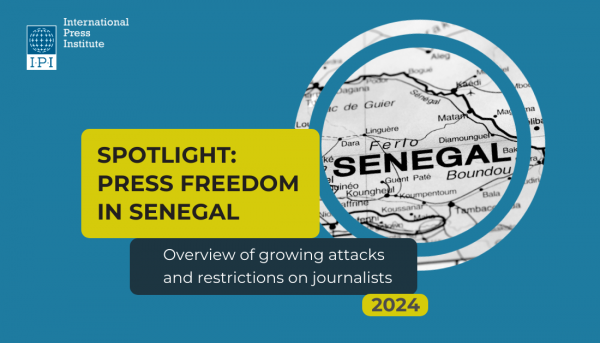In many places, government agencies and state-owned companies dominate the local economy, giving them incredible clout as advertisers. And their power to affect the financial health of news media has an obvious impact on press freedom.
IPI World Congress Session VIII/A, “Manipulating the Media: Government Advertising as a Reward or Punishment for Media Outlets”, was all about how to stop governments from using public money to push media around.
“Ka-ching!” said session host Jim Clancy, CNN anchor and correspondent. The sound of money, and especially the sound of government funding flowing into the media, can be sweet. Many times, the money helps to boost new, independent outlets. But as Clancy said, the sound of money can also be the sound of journalists selling out, backed into a corner under pressure.
Also on the panel were Clive Bacchus, managing director and chief editor of Federation Media Group in Saint Kitts and Nevis, Anand Persaud, chief editor of Stabroek News in Guyana, and Eleanora Rabinovich, the director of the freedom of expression program at the Association for Civil Rights in Argentina.
Rabinovich’s organization has been studying how public advertising affects media freedom, and their research showed that government spending on advertising is on the up, and that ads are often used to serve party politics rather than public policy. The phenomenon cuts through all political parties and ideologies, at all levels of government, and affects all forms of media.
And when governments do decide to cut advertising, it can spell life or death for that news company. Persaud of Stabroek News knows that firsthand. His outfit lost 15 percent of its revenue stream when government, long dominated by two major political parties, took umbrage at the paper’s coverage of a rising third group. Rather than letting that defeat them, the paper resolved not to fire any staff but instead to cut costs elsewhere. Now it has a model that works without relying on funds from government.
Cuts in government advertising don’t just affect media houses’ bottom lines. They affect news consumers, too, who are denied access to sometimes critical government information. Persaud offered the example of public invitations to tender bids for big state contracts. If readers are denied such information they may turn elsewhere for their news.
But the media are not without the ability to fight back. It just means getting a little creative, and staying aggressive. Regardless of their political slant, all media serve a portion of the public and have a right to a slice of the government advertising pie. After all, as Bacchus rightly said: “I don’t believe it’s the government’s money. Its public money, and it should be spent in the public interest.”
So what’s the solution? Journalists from the audience shared their stories, and the motto was clear: Content, content, content. Serve your readers and they’ll stay loyal. Build credibility and you can’t lose. Think outside the box: By writing about the government invitations to tender bids, Stabroek gave their readers access to the same information they would have received from the ads, and access to the story behind them.
Take the government head-on. Start a campaign to raise public awareness about how government is spending the people’s tax dollars to support media that toe the current government’s line.
If all else fails, use the courts. Rabinovich said media have successfully challenged biases in government spending, and have successfully demanded information as to how government agencies are allocating their advertising funds. There is a growing consensus among international experts that guidelines should be put in place so that advertising expenditure is fair, regardless of who holds office.
And at the end of the day, there are ways to survive without any state advertising at all. If you can make that work, as Persaud said: “It’s Nirvana”.


